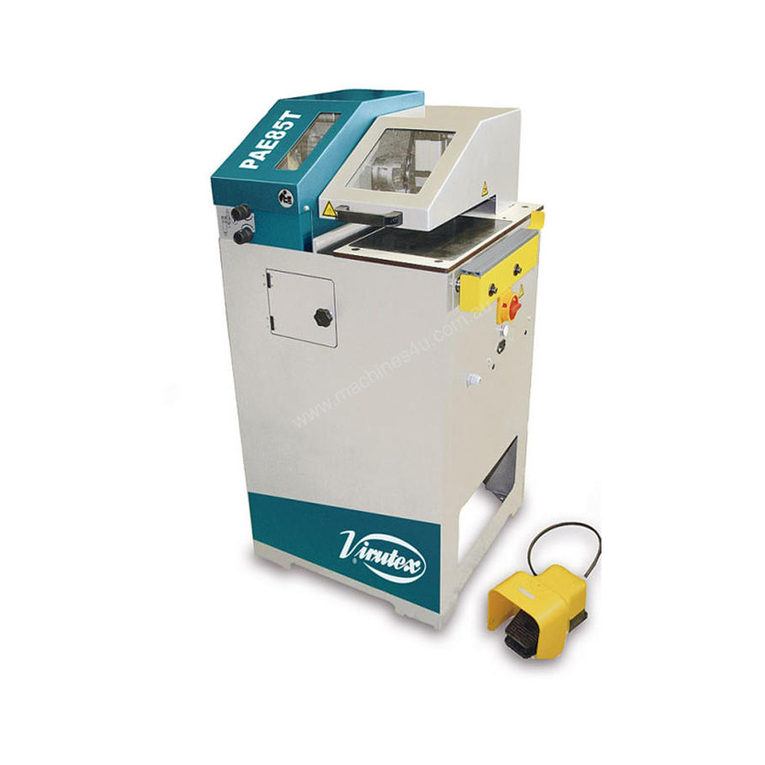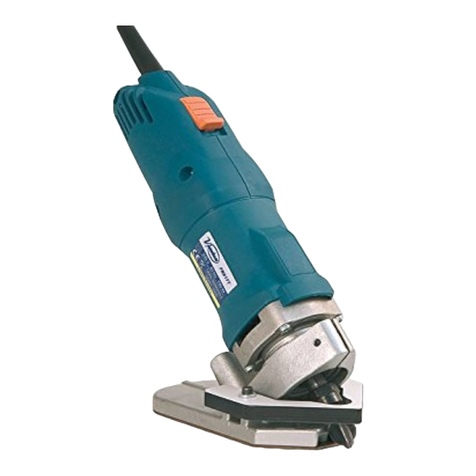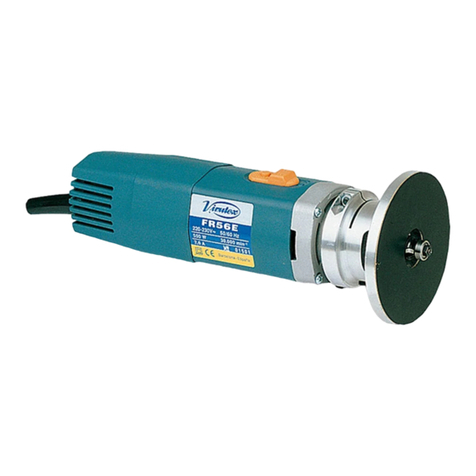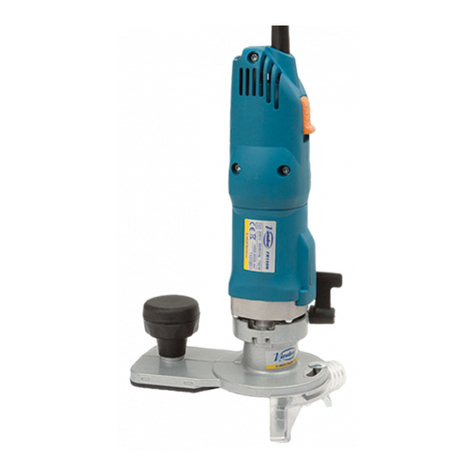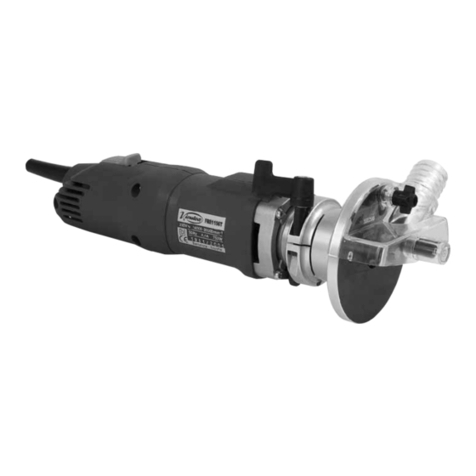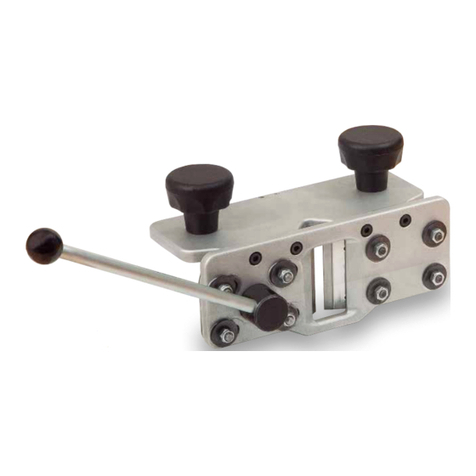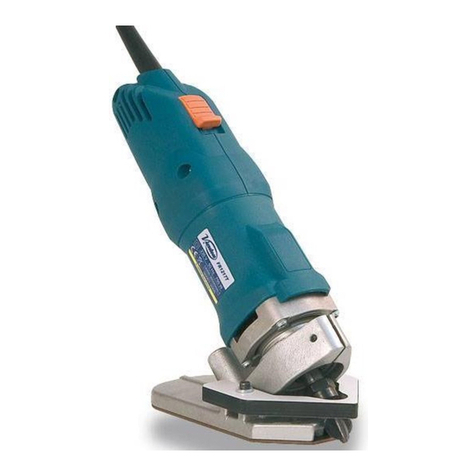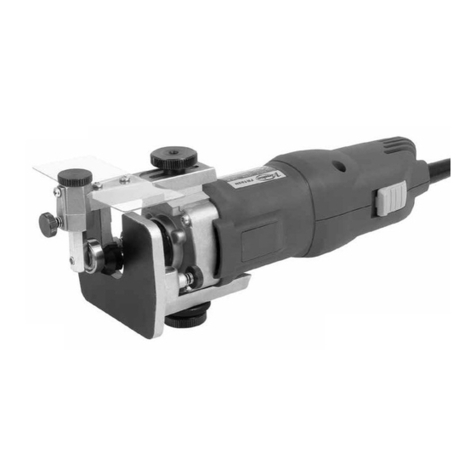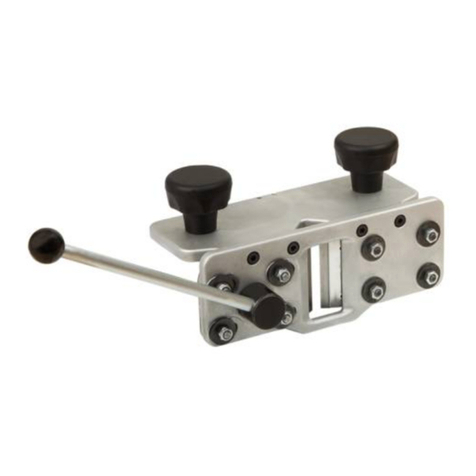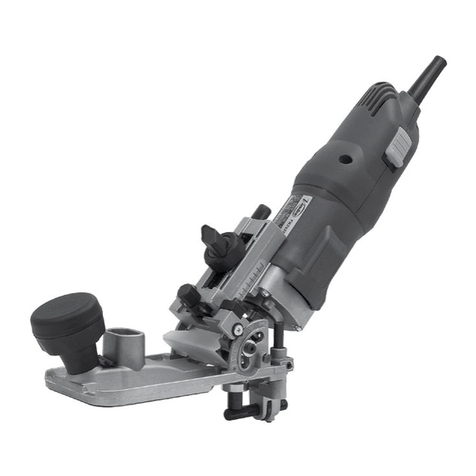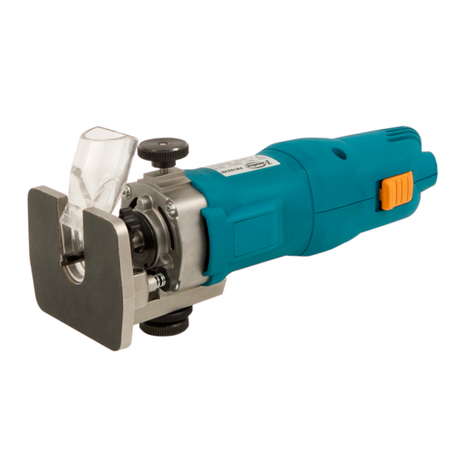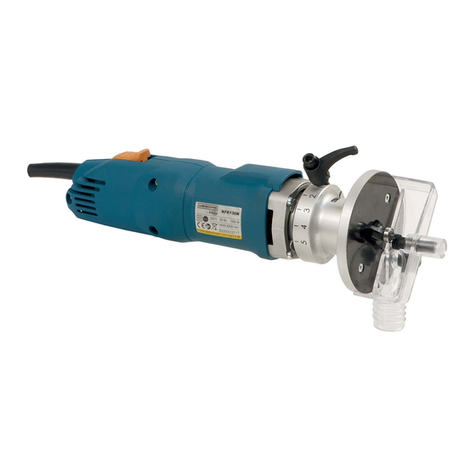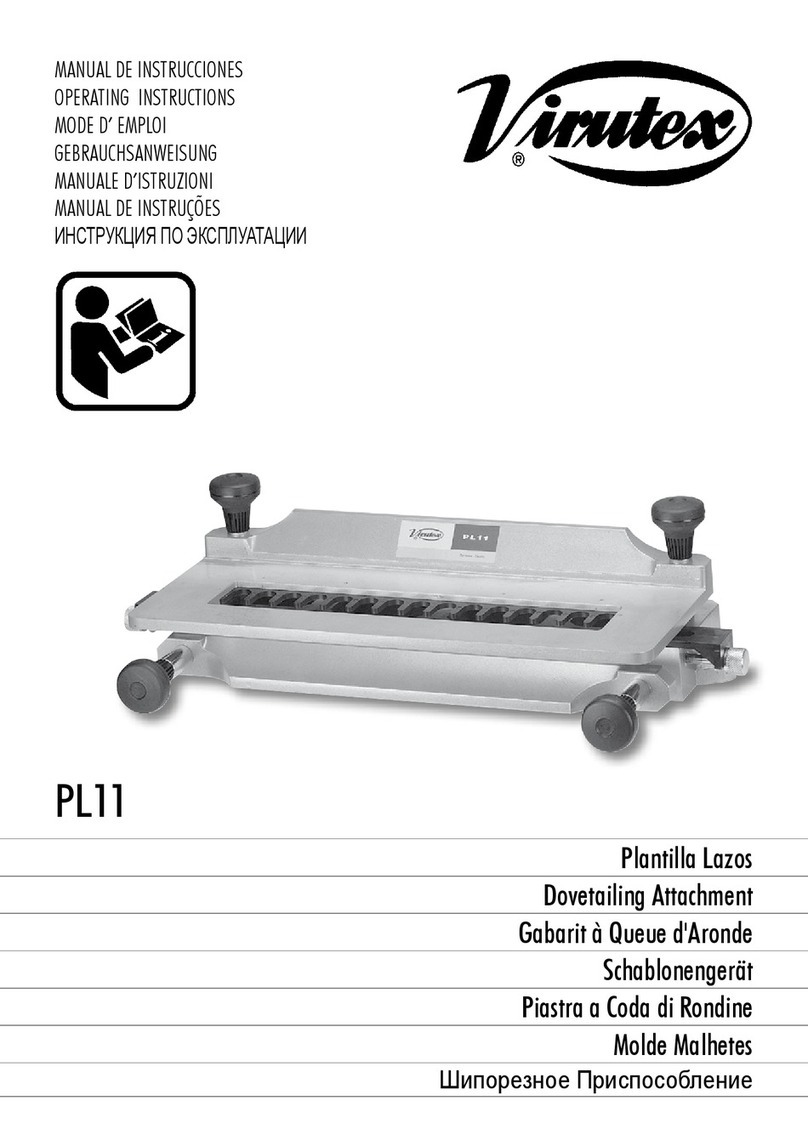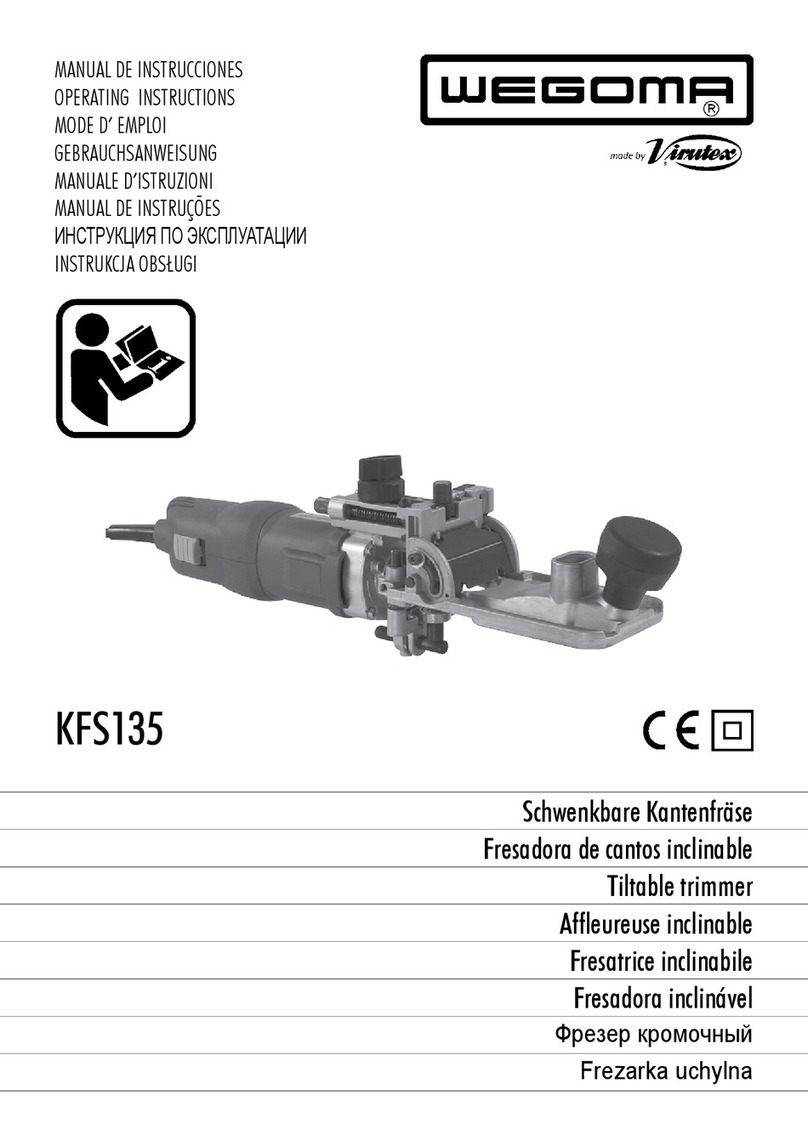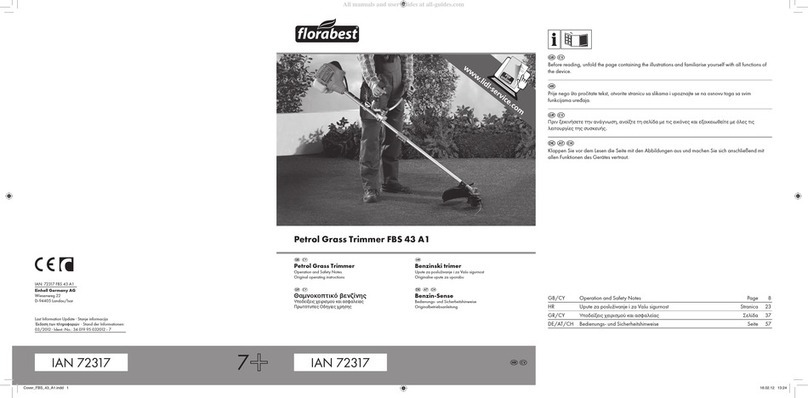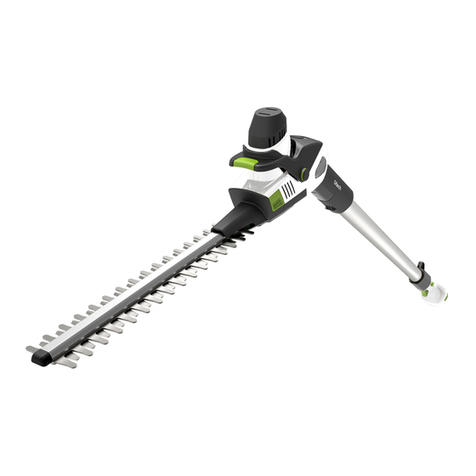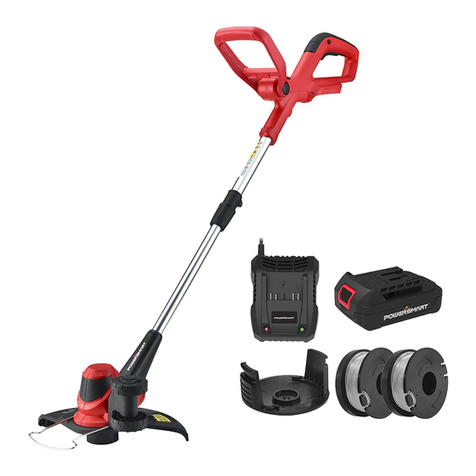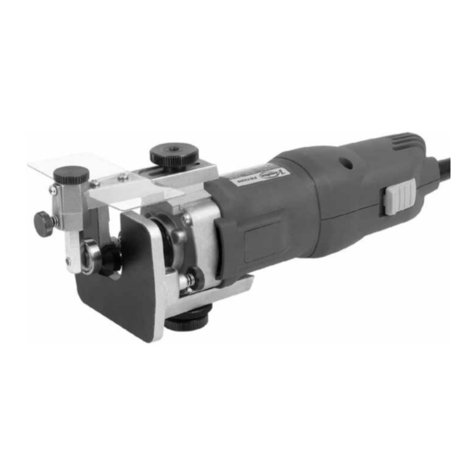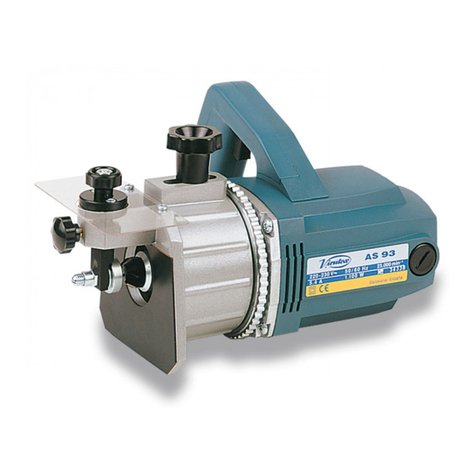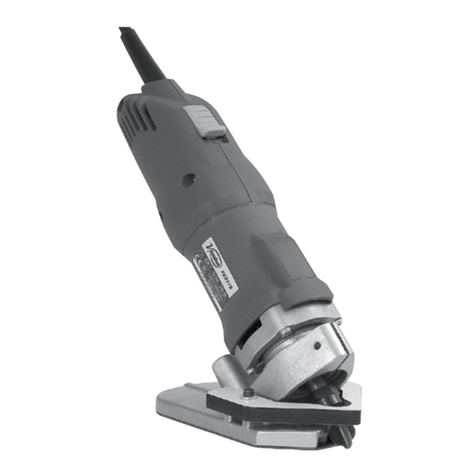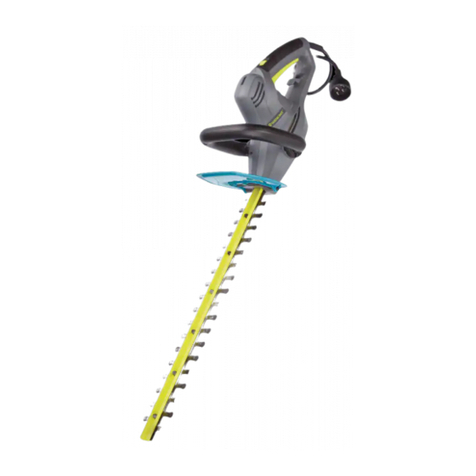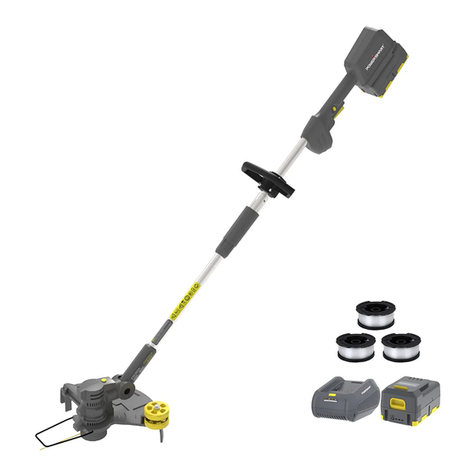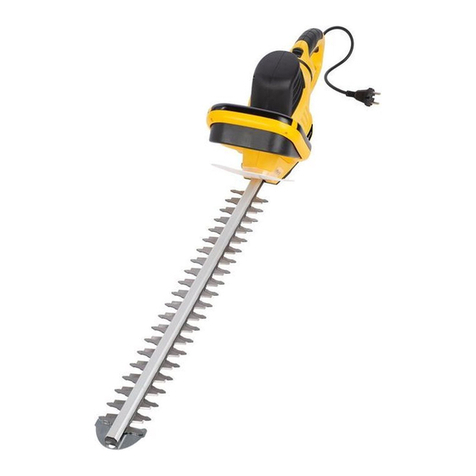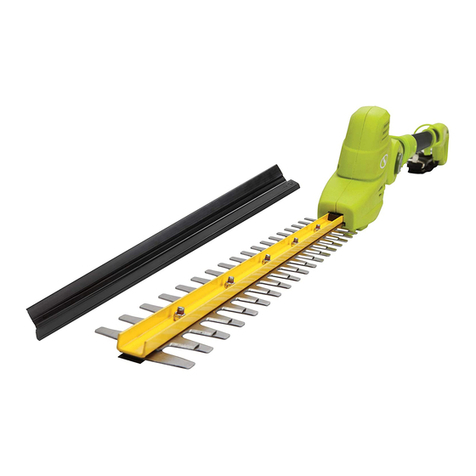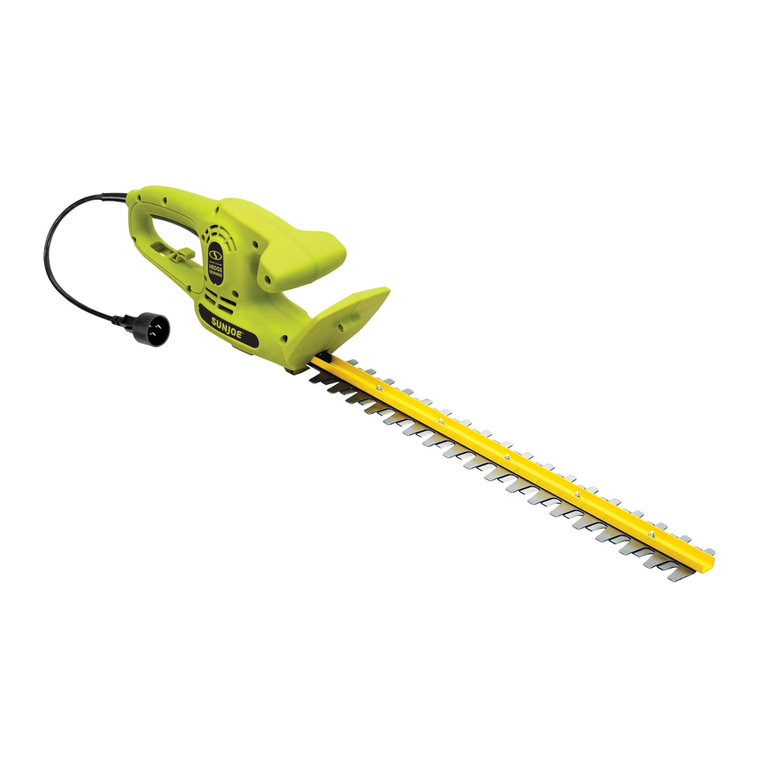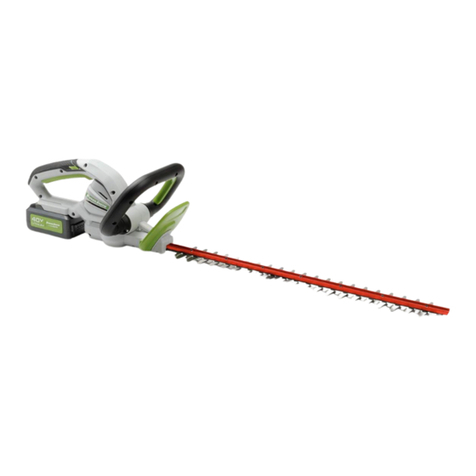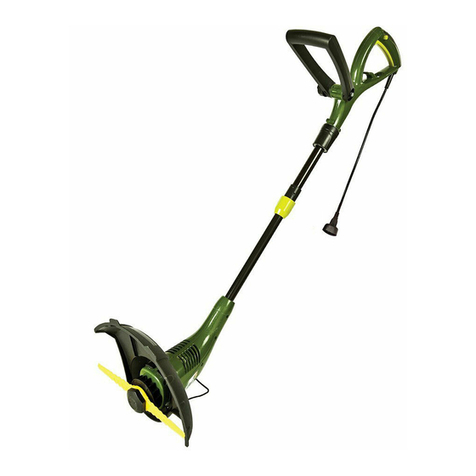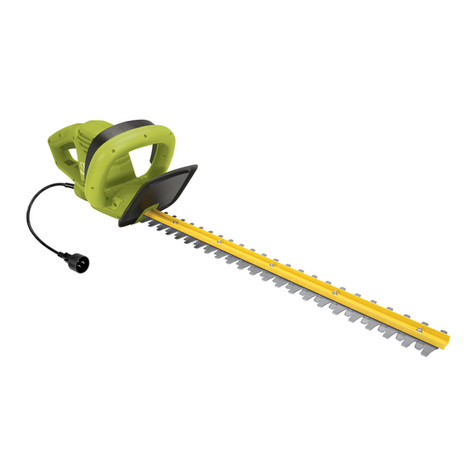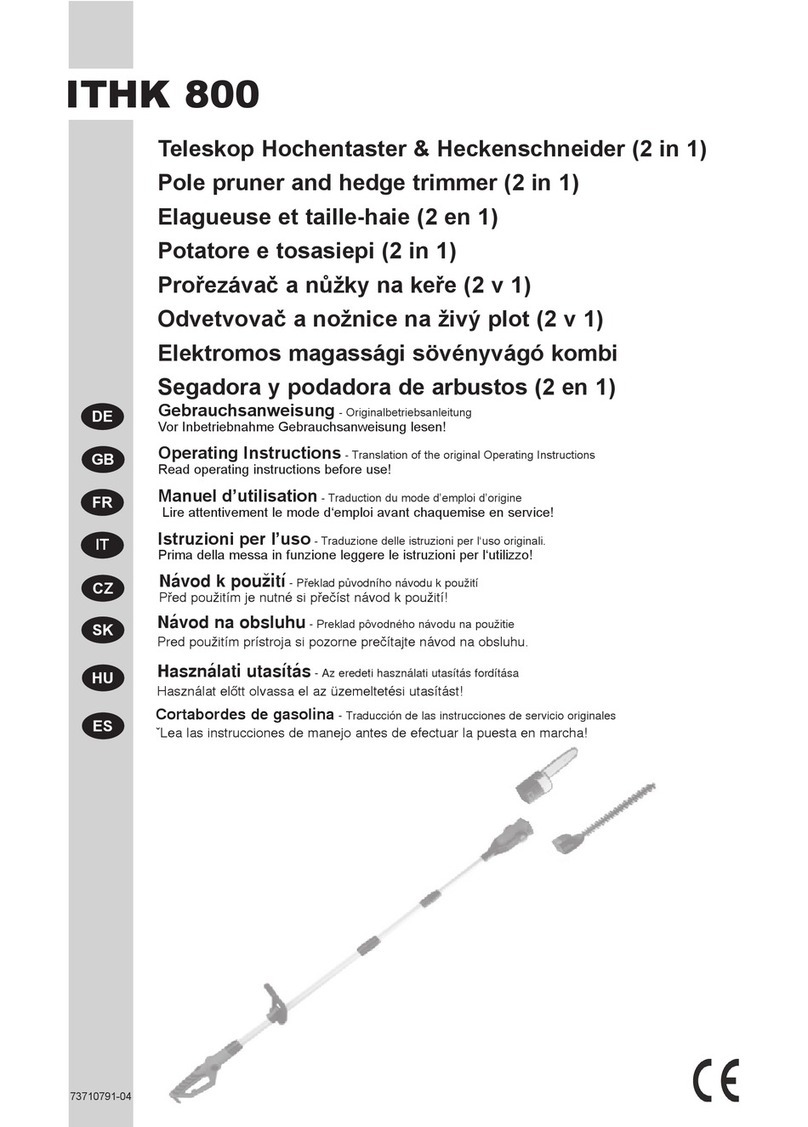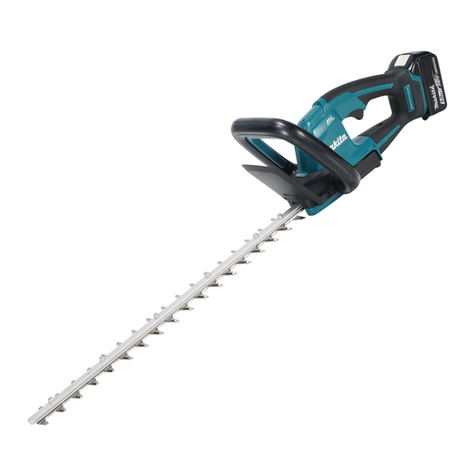9
позволяет удалять передний и задний торцевые
свесы кромочного материала при облицовке
прямолинейных деталей (Fig. 1) и удаления
излишка для стыковки кромочного материала
при обработке выгнутых криволинейных
деталей (Fig. 2).
Максимальная ширина кромочного материала
при толщине до 1 мм.........55 мм
Максимальная ширина кромочного материала
при толщине до 2 мм.........45 мм
Максимальная ширина кромочного материала
при толщине до 3 мм........25 мм
2. ИСПОЛЬЗОВАНИЕ ПРИ УДАЛЕНИИ
СВЕСОВ НА ПРЯМОЛИНЕЙНЫХ ДЕТАЛЯХ
Установите упор A (Fig. 3) в крайнее нижнее
положение, как указано на рисунке Fig. 3 и
зафиксируйте его в этом положении при помощи
фиксатора B, (Fig. 3).
Установите подрезатель на обрабатываемой
детали (Fig. 4) таким образом, чтобы излишек
кромочного материала проходил между ножами,
а основание упора C (Fig. 4) базировалось на
торцевой поверхности детали.
Удерживая подрезатель при помощи рукоятки
D (Fig. 4) одной рукой, удалите излишек
кромочного материала, нажав на рычаг E (Fig.
4) другой рукой.
3. ИСПОЛЬЗОВАНИЕ ПРИ ОБРАБОТКЕ
КРИВОЛИНЕЙНЫХ ДЕТАЛЕЙ
Для получения надлежащего результата
при стыковке кромочного материала на
криволинейном участке начальный срез F (Fig.
5) кромочного материала должен быть выполнен
на столько прямым, на сколько это возможно.
Удаляемый излишек кромочного материала при
стыковке должен быть не менее 20 мм (G, Fig.
5). Для возможности установки порезателя, при
приклейке кромочного материала, оставте не
приклеенным участок 50 мм (H, Fig. 5).
Установите упор I, (Fig. 6) в крайнее верхнее
положение, как указано на рисунке Fig. 6.
Зафиксируйте упор в выбранном положении
при помощи фиксатора J, (Fig. 6).
Установите подрезатель на обрабатываемую
деталь, пропустив неприклеенный участок
кромочного материала между ножами (Fig. 7).
Подвиньте подрезатель до его упора в
начальный срез кромочного материала K (Fig.
7) при этом основание упора L (Fig. 7) должно
касаться поверхности приклеенного кромочного
материала.
В данном положении сделайте первый срез.
Настройка положения штанги упора M (Fig.
7) осуществляется в зависимости от радиуса
кривизны детали в точке стыка, таким образом
настройка должна выполняться с учетом
того, что при смещении штанги упора по
направлению, отмеченному знаком “+” (N, Fig.
8) остаточная длина кромочного материала
после удаления излишка будет больше и,
соответственно, при смещении в сторону знака
“-” (O, Fig. 8) будет меньше.
После выполнения настройки, по достижении
требуемого результата стыковки, на шкале P (Fig.
8) будет отражено положение упора. Следующая
таблица приводит примерные рекомендации по
установке индекса P (Fig. 8) в зависимости от
радиуса кривизны обрабатываемой детали (Fig.
5). Каждый пользователь должен производить
дополнительные настройки на основе своего
опыта и способа использования инструмента.
Рекомендуется выполнить предварительный
рез с увеличенным значением индекса, а
затем, подстроить до указанного значения.
Настоятельно рекомендуется выполнить
пробный рез на тестовой детали с аналогичным
радиусом.
Радиус (мм) Индекс
300 3,5
500 5
1000 5,5
2000 6
4. ЗАМЕНА НОЖЕЙ
Для замены ножей просто отверните
фиксирующие их винты (Q и R, Figs. 9 и 10).
5. ГАРАНТИЙНЫЕ ОБЯЗАТЕЛЬСТВА
Все электроинструменты фирмы Virutex
имеют гарантию 12 месяцев со дня покупки.
Гарантия не распространяется на те случаи,
когда повреждение явилось результатом
неправильной эксплуатации или естественного
износа. При необходимости ремонта
обращайтесь в пункты техобслуживания или
уполномоченным представителям фирмы
Virutex.
Компания VIRUTEX оставляет за собой
право вносить изменения в конструкцию
или стандартный комплект поставки без
предварительного уведомления.












